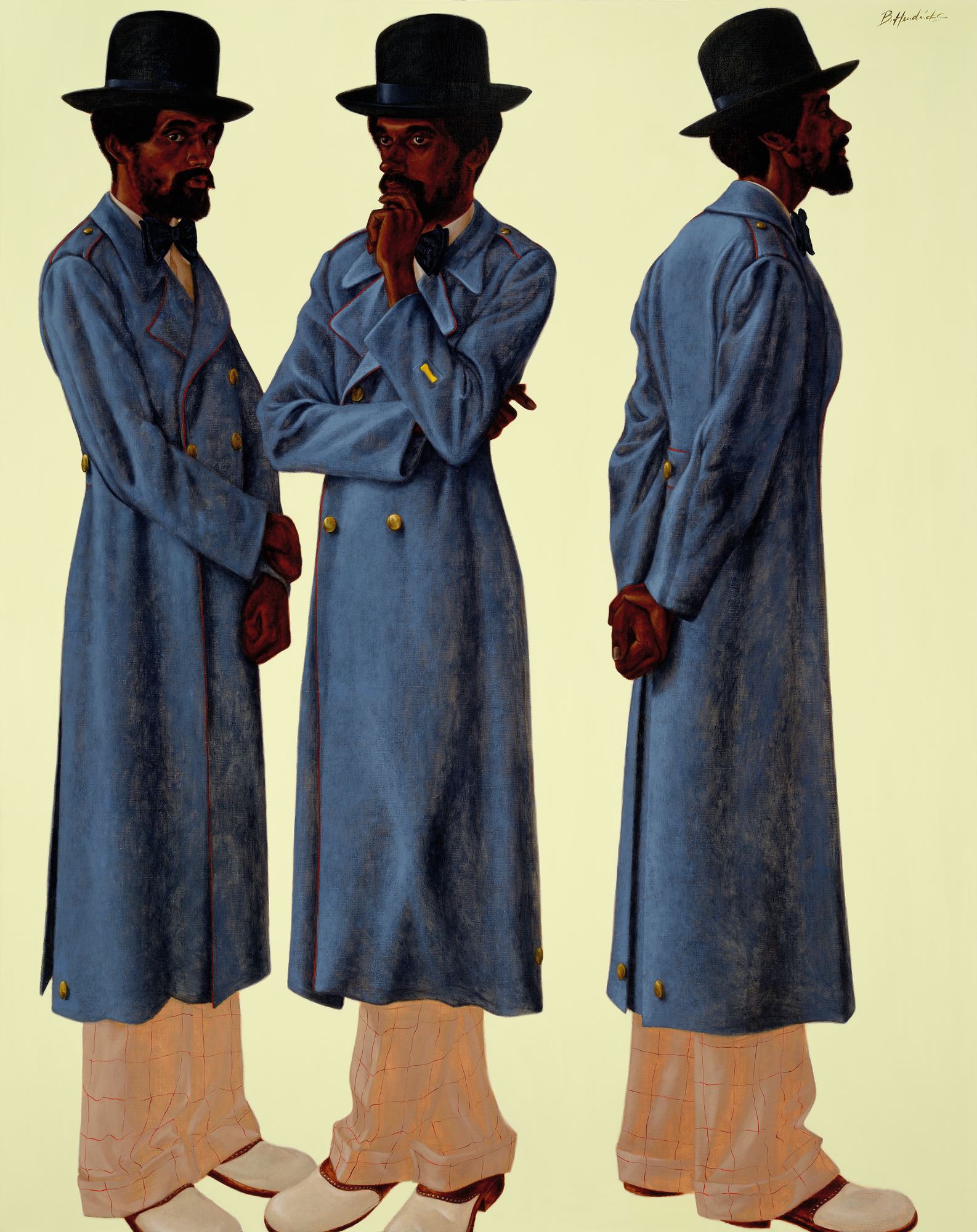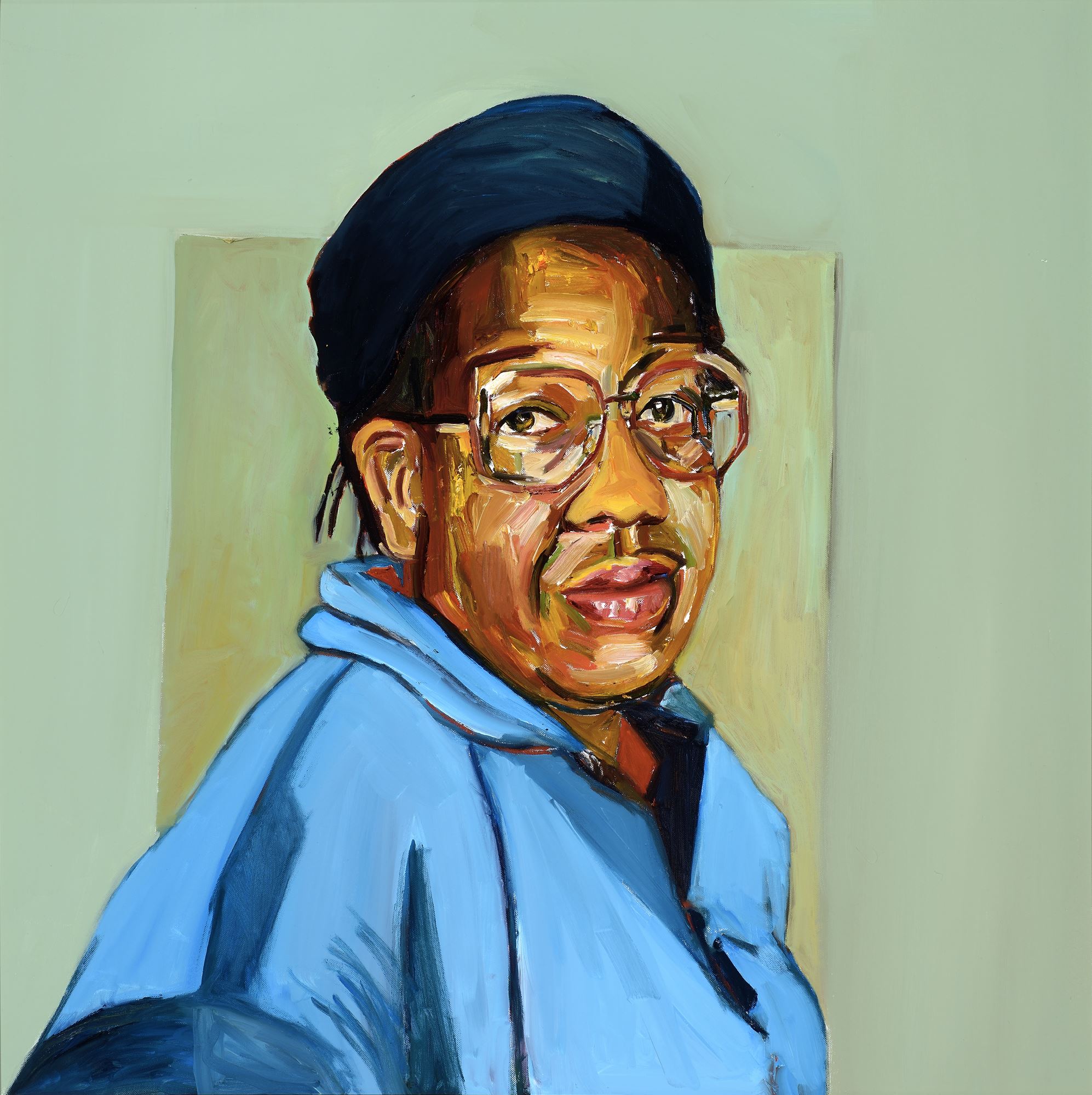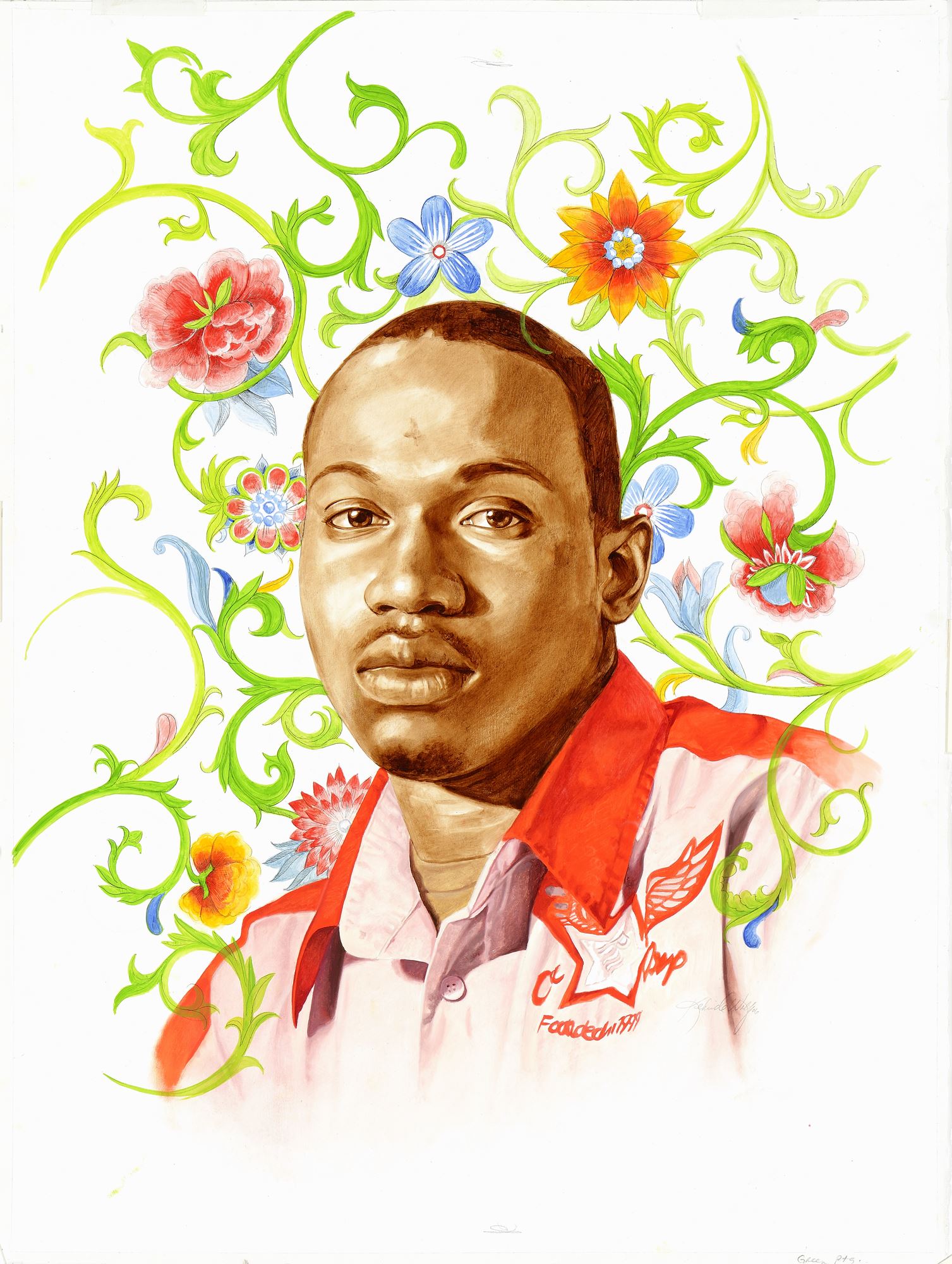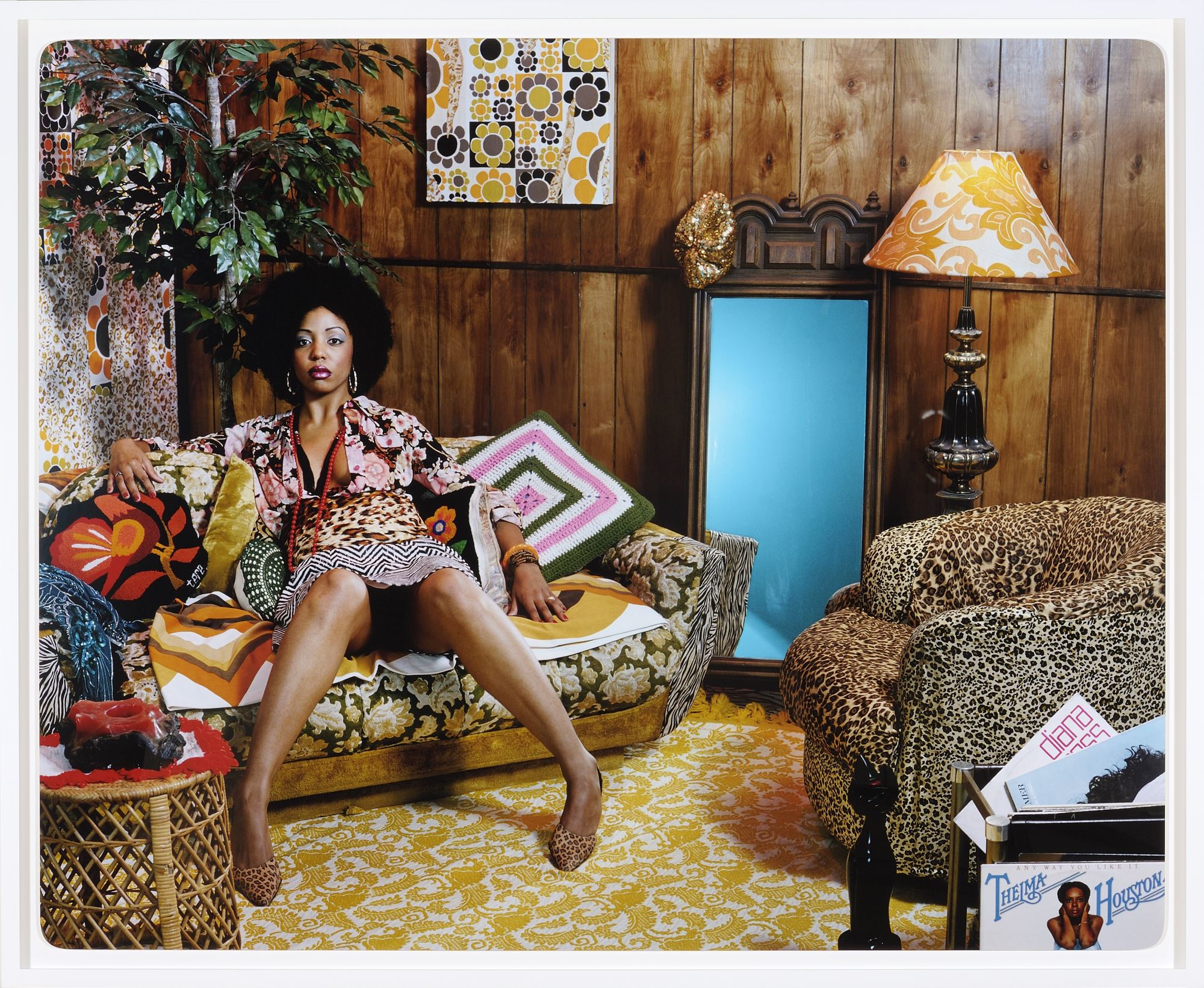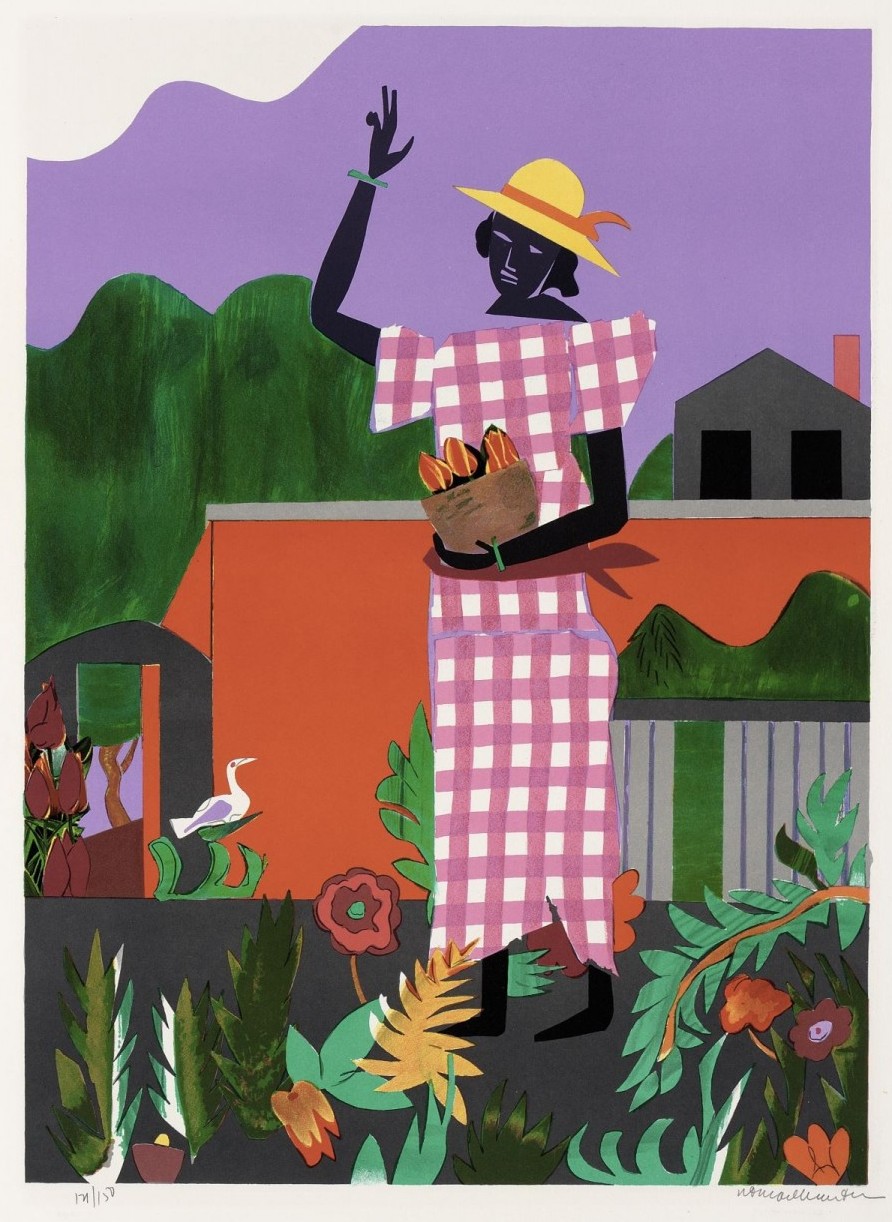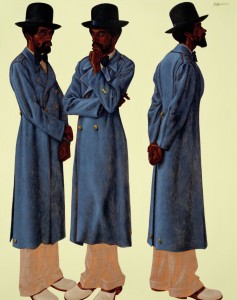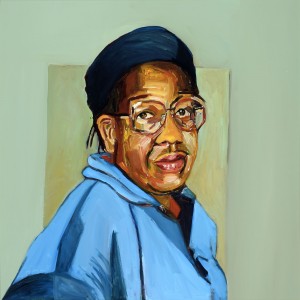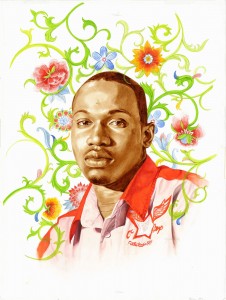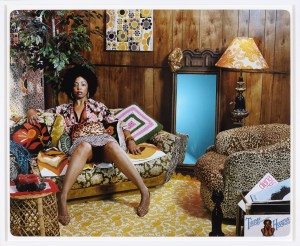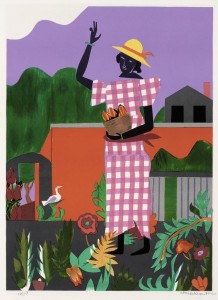Lesson Plan
Day 1
Hook: Gather students on carpet. Display and call students’ attention to Nasher portraits, labeled with artists’ names. Remind students that different artists use different techniques to represent their subjects. Use a timer and direct students attention to each portrait, one at a time. They will have 30 seconds to focus on each one.
Ask students to raise their hands if they have a favorite artist/ style. For those who do not have a favorite, ask if students are deciding between multiple pieces, or if none appeal to them.
“I will set my timer for one minute. If you already have a favorite, think of three things you like about this favorite. If you do not yet have a favorite, think of one thing you like about each of the ones you’re considering.” Start timer. “Think!”
Have students turn to a partner. Each partner will get 60 seconds to share their thoughts about their chosen portrait(s)/ artist(s).
Distribute writing/ planning paper; have students return to their desks to document their thought process in the plan step of the writing process: 7-10 minutes.
Day 2
Reconvene students on carpet; model 1st step of the writing process: plan.
Draw students attention to works: “Yesterday we talked to our partners about different works by different artists and how their use of color, line, or shape appealed to us. If you can think of one element of an artist’s work that really appeals to you, raise your hand to share that with the group. I’ll give you 15 seconds to choose the one technique and what you like about it.”
Take student comments in VTS style.
“Raise your hand if you are still unsure of which artist you want to have draw your portrait. That’s okay. I really like _ and _ and can’t really say who is my favorite. I’m just going to go with _.”
Some of you might have already made a plan. I’m going to show you the pieces I want in this plan.
- Model plan: Quickly draw a picture of your chosen artist’s work. Emphasize to students that this is a writing project and not an art project, so they are NOT spending all their time making a perfect copy.
- Label the elements that you like. E.g. color, shape, pattern, line, texture
- Return to those labels and write your feelings or opinions on those techniques.
- Eg: (For Romare Bearden’s In the Garden) Lines: powerful; colors: bright and happy; pattern: excited.
- You should have at LEAST three elements and feelings labeled on your plan before you are ready to draft.
- Check in to see who has made a labeled plan and ready to draft and who is still undecided. Arrange to conference with undecided students.
Day 3: Draft
Gather students on carpet. Remind them of portraits and of steps of the writing process (Plan, Draft, Revise, Edit, and Publish).
“We are working on opinion writing. That means that we are writing down our thoughts and feelings. I have asked you to think about which of our artists you would like to draw a portrait of you. All of you should have your plans finished – that means you have labeled 3 things – and at least be started working on your drafts from that plan today.
A draft is a first try in your writing work. It’s a place to take your drawings and labels and start making them something a reader can take and make sense of! It does not have to be perfect!”
Model draft. Refer to plan to write (imperfect) sentences expressing thoughts contained in plan. Talk through your thought process as you model. “Did I use all of the notes I made on my plan?”
Have a student review instructions: we are finishing our plans and starting on our drafts.
Dismiss students to work on drafts; circulate to make notes on students process and choose small groups for conferencing.
Days 4-5: Revise
Gather students to the carpet. Ask for a volunteer to review what the class is doing (working on an opinion piece about which artist we’d choose to do our portrait and why).
“The next step after writing a draft is…?” Revision! “Revision is…?” Making a written piece sound better by making sure it makes sense, sounds good, and by adding details.
Show model draft. Read it aloud. “Is this the best it can be? Today you are going to help each other revise your opinion pieces. When you are finished with your draft, you will come to the writing carpet and pick a partner. You will read aloud your piece. Your partner will listen. Then you will give your piece to your partner to read. Partners, your job is to let your friends know if what they are saying makes sense and to find the nouns. You will add details to the nouns. If you said ‘line,’ your partners will help you say whether it is a curvy line, a jagged line, etc. Make notes on their comments, and then switch.”
Remind students that this is not playtime with their friends. They will work with whomever is there. They are allowed to say, “I like…” “I didn’t understand…” and “You could add…”
Have students review instructions; finish drafts and head to revisions.
Circulate to identify students who need more guidance and to monitor partner revisions.
2nd revision day: Brief mini-lesson. “If you are finished partner revising, you will read your piece to yourself and ask yourself if it makes sense and if details could be added. Then make those changes. The rest of you will finish your drafts and partner-revise.”
Day 6
“All of you should have drafts that have been revised. Today we are going to work on editing. Editing is… ? Making it look good! That means we start every sentence and proper noun with an upper-case letter; our words have spaces between them; our word-wall words are spelled correctly; and we have correct punctuation at the end of our sentences.”
Have students return to their desks to edit. Circulate to make sure they’re on task and to offer support and/or conferencing.
Day 7-8: Publish!
“When you are finished with all of the steps of the writing process, does your draft look beautiful? No! Publishing means you are putting all of your work and changes into a new copy that a new reader can understand and appreciate.”
Have students work independently to publish. Circulate to offer support and conferencing.
Day 9: Present
“Today and tomorrow we will share our work. Some of you like it when I read your work out loud, and I’m happy to do that. If you want extra credit (i.e., stickers), you can present it to the class. If you do want to present to the class, come over here. If you do not, go over there. You will be helping your partners practice.” (If everyone wants to present, they will help each other).
Model reading aloud published piece in quiet monotone, with face in paper.
Model reading aloud with more animation, referring to piece, making eye contact, etc.
“I want you to read fluently (like you are talking), intelligibly (loud enough that we can understand), and expressively (with feeling!).”
Explain that to help, partners can clear throat and point to eyes to keep eyes up, bob back and forth to increase speed, hold ear to encourage volume, and point to smiling cheeks to encourage expression.
Have students pair up to practice: (15 min); circulate to help coach partnerships and speakers.
15 min: presentations + feedback: What we liked!
Day 10 (optional)
Continue presentations and celebration of authors.
Extension
- Choose a different piece and write a story about it.
- Draw a self-portrait in the style of the artist you chose in this project
